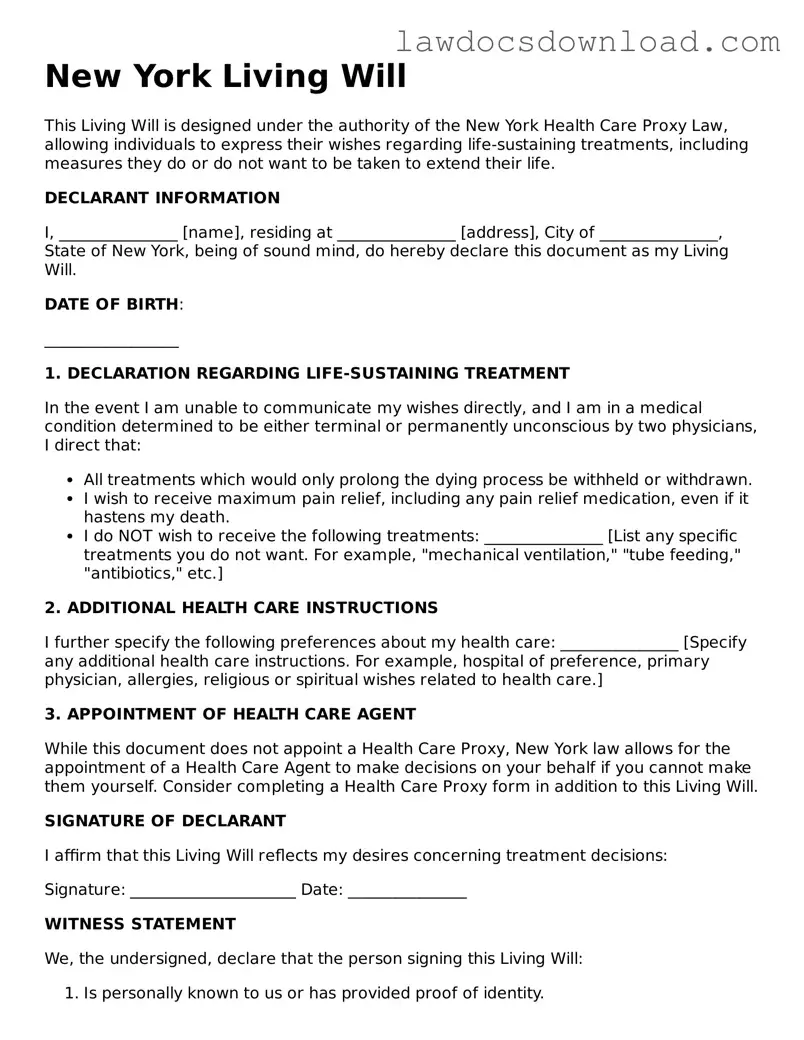New York Living Will
This Living Will is designed under the authority of the New York Health Care Proxy Law, allowing individuals to express their wishes regarding life-sustaining treatments, including measures they do or do not want to be taken to extend their life.
DECLARANT INFORMATION
I, _______________ [name], residing at _______________ [address], City of _______________, State of New York, being of sound mind, do hereby declare this document as my Living Will.
DATE OF BIRTH:
_________________
1. DECLARATION REGARDING LIFE-SUSTAINING TREATMENT
In the event I am unable to communicate my wishes directly, and I am in a medical condition determined to be either terminal or permanently unconscious by two physicians, I direct that:
- All treatments which would only prolong the dying process be withheld or withdrawn.
- I wish to receive maximum pain relief, including any pain relief medication, even if it hastens my death.
- I do NOT wish to receive the following treatments: _______________ [List any specific treatments you do not want. For example, "mechanical ventilation," "tube feeding," "antibiotics," etc.]
2. ADDITIONAL HEALTH CARE INSTRUCTIONS
I further specify the following preferences about my health care: _______________ [Specify any additional health care instructions. For example, hospital of preference, primary physician, allergies, religious or spiritual wishes related to health care.]
3. APPOINTMENT OF HEALTH CARE AGENT
While this document does not appoint a Health Care Proxy, New York law allows for the appointment of a Health Care Agent to make decisions on your behalf if you cannot make them yourself. Consider completing a Health Care Proxy form in addition to this Living Will.
SIGNATURE OF DECLARANT
I affirm that this Living Will reflects my desires concerning treatment decisions:
Signature: _____________________ Date: _______________
WITNESS STATEMENT
We, the undersigned, declare that the person signing this Living Will:
- Is personally known to us or has provided proof of identity.
- Appeared to be of sound mind and not under duress, fraud, or undue influence.
- Signed or acknowledged their signature on this Living Will in our presence.
Witness 1: _____________________ Date: _______________
Witness 2: _____________________ Date: _______________
NOTARY PUBLIC (If required)
This section should be completed if a notary public is required to witness the signing of this Living Will in New York.
State of New York )
County of _______________ )
Subscribed and sworn before me this _______________ day of _______________, 20__.
Notary Public: _______________
Commission Expires: _______________
